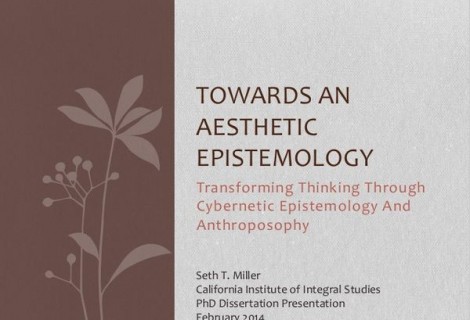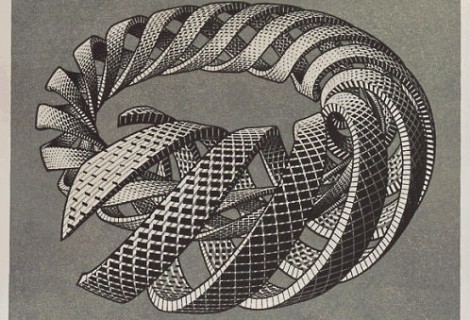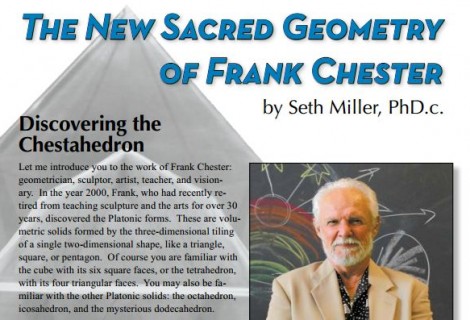An Esoteric Guide to Spencer Brown’s Laws of Form #2
« Previous Page | 1 2 3 4 | View All | Next Page »
(New readers will want to start with the first installment.)
Let us continue our beginning:
LoF p. 1
- We take as given the idea of distinction and the idea of indication, and that we cannot make an indication without drawing a distinction. We take, therefore, the form of distinction for the form.
If this doesn’t strike you as having a “mystical” flavor, then you are drinking the wrong concoction. I’m not going to try to explain this, but rather I’m going to try to re-frame it; you could say, in GSB-approved language, that I’m going to re-mark it. The important thing to note about this, the very first “official” sentence of the LoF, is that it is recursive. Let’s be clear: the Laws of Form (not the book, the LAWS) are only possible because of a recursion, a throwing back on itself of itself. But a throwing back of what onto itself?
Well, “nothing”, of course; but nothing understood as what everything would be if it were.
But of course nothing doesn’t remain nothing (well, it does, but it doesn’t), because here we are. The question GSB is really attempting to get at is the question: how does this nothing become “all this”? THAT it does is directly evident (to the “all this” and likewise “all of us”), but GSB wants to know how; he wants to know the form by which happening happens.
There is only, really, one option: nothing becomes “all this” by virtue of a distinction.
Now, you’ll have to stay close as we proceed on this journey, because what we are doing here is trying to illuminate not creation, but the illumination that illuminates creation. We are trying to describe not simply what can possibly be talked about (the “all this”), but are attempting, rather, to describe describing. At its heart, this is ultimately an esoteric task, not a philosophical one.
So to begin: the first distinction is THAT OF distinction. As we find out in the very last sentence of the last “official” chapter (before the lengthy notes),
LoF p. 76
- “We see now that the first distinction, the mark, and the observer are not only interchangeable, but, in the form, identical.”
This is to say, the distinction and the distinguisher are equivalent (they are confused, fused together). You may be wondering what “the mark” is. GSB just said it was identical with the first distinction, but while this is true, it is not yet illuminating. GSB uses the idea of a mark in its literal sense, as a mark on a page, for example. For this reason he can say
LoF p. 4
- Let a state distinguished by the distinction be marked with a mark [see below] of distinction.
The actual mark can be anything, but he uses the shape of a capital T with the right hand limb missing, an upside-down and backwards “L”. In other words, making a distinction leaves a mark, and we can indicate the mark in any way we choose (we can mark the mark), but we have to choose something.
« Previous Page | 1 2 3 4 | View All | Next Page »







amazing…like you! thank you for sharing
Seth, this is so cool! Thanks for sharing it with us…..